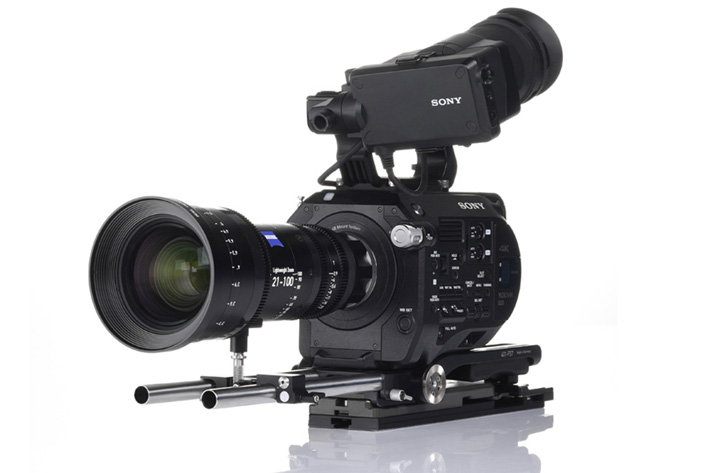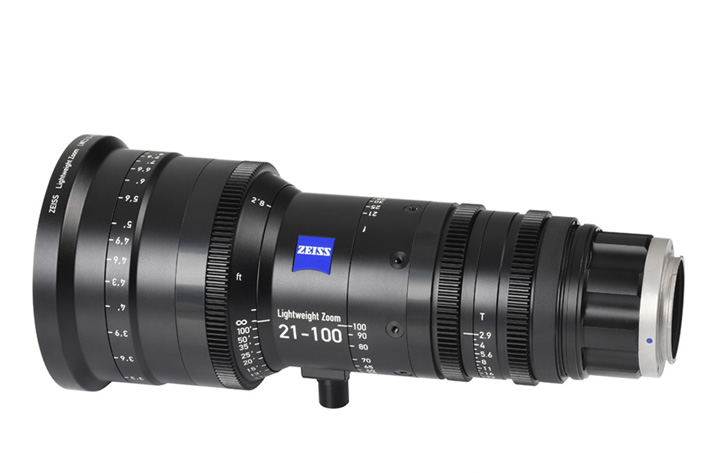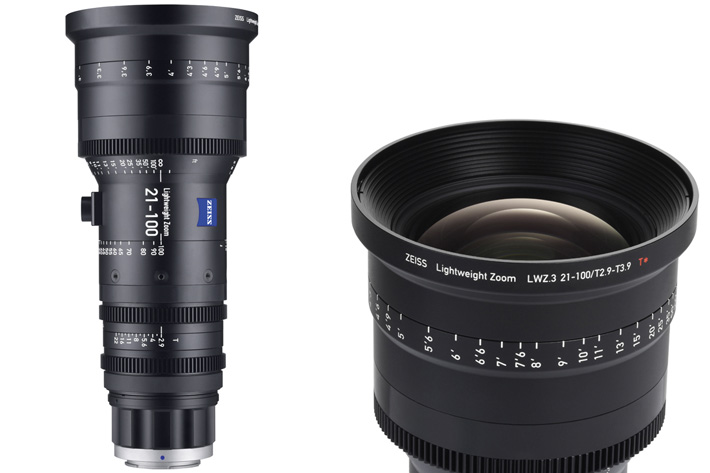
Imagine a zoom lens covering everything from 21 to 100mm, made for the Super 35 format, and which is not only light weight by name but by weight, with only two kilos. It’s the Zeiss Lightweight Zoom LWZ.3 21-100mm/T2.9-3.9 T*.
It could be called the “universal zoom for professional film productions”. The Zeiss Lightweight Zoom LWZ.3 21-100mm/T2.9-3.9 T* (ZEISS LWZ.3), to use the complete designation, for the Super 35 format that can be used for a wide usage spectrum thanks to its light weight. The ZEISS LWZ.3’s optical qualities, long focus rotation angle for precise focusing, and the high quality of the materials used in its construction make it the ideal lens for sophisticated film shoots for many different application scenarios. The new zoom lens is compatible with all common film cameras, and will be available starting January 2017.
One interesting aspect about this lens is that is is presented as a lens that will do the work of six fixed focal lenses. Long gone are the days when primes would be the ONLY way to go. It may not be an opinion shared by everybody, but there is a growing tendency, both in video and photography, to accept the fact that new zoom lenses rival what was once a characteristic of primes.

“With a focal length of 21 to 100 millimeters, the new ZEISS LWZ.3 covers a range for which cameramen had to use up to six fixed focal lengths until now. This flexibility delivers a clear price and time advantage as it is no longer necessary to change focal lengths,” said Christophe Casenave, product manager from ZEISS Camera Lenses. As a result, the zoom lens is well suited for budget-sensitive film projects.
“Because of its modern optical design in a compact and high-quality housing, the ZEISS LWZ.3 is a long-term investment, especially for smaller productions,” added Casenave. Moreover, the ZEISS LWZ.3 is equipped with the well-known exchangeable mount – the so-called Interchangeable Mount System – with five different mounts for all current camera systems.

Casenave also notes that the lens is characterized by its ergonomics, which allow high-quality films to be shot even in difficult situations. Such tricky situations can occur due to high time pressure, cramped space conditions on the set – where changing a lens is difficult to do – or low budgets. “The bokeh, highlights and contrast offer a look that you could otherwise only get with more expensive cine lenses,” said Casenave. Other technical quality features of the ZEISS LWZ.3, in his view, include its calibrated scales, consistent imaging quality across the entire image field, no vignetting, and the efficient reduction of reflections through the well-known ZEISS T* anti reflective coating.
The ZEISS LWZ.3 will be available from the end of January 2017 at a retail sales price of $9,900.

